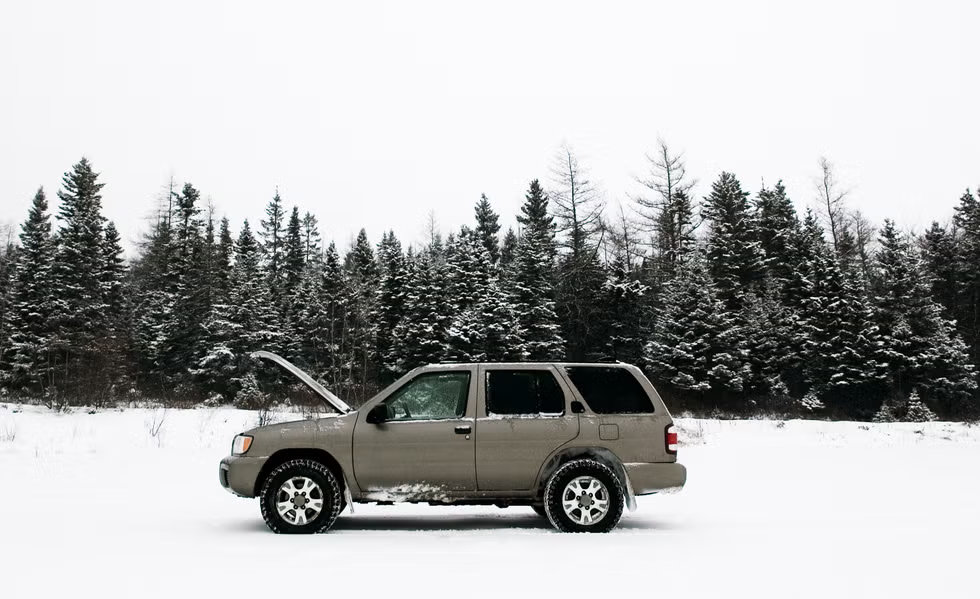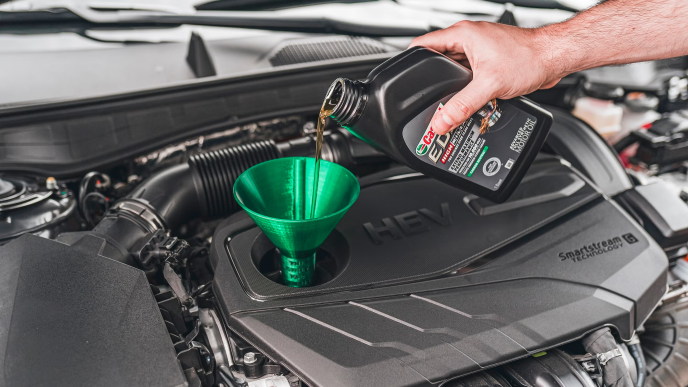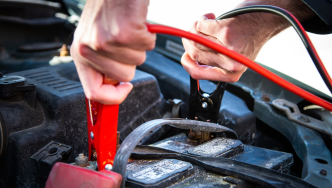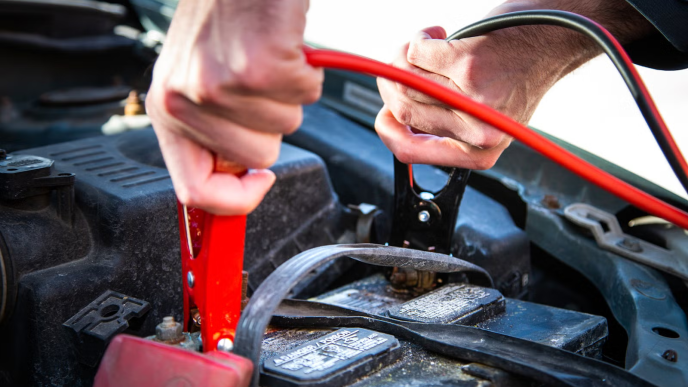When winter’s grip tightens and the mercury plunges, even a 30-degree day can feel downright tropical. Temperatures dip into single digits, the wind cuts like knives, and every breath feels sharp. The world outside is frozen solid.
Few places understand true cold like Alaska. James Grant, owner of Right Choice Automotive Repair in Fairbanks, has witnessed firsthand how brutal weather can turn a well-running car into a reluctant beast. We spoke with him—and the Car Care Council—to uncover how frigid air impacts vehicles and what you can do to fight back.

Problem: You Drive an EV
Solution: The issue isn’t driving an electric vehicle—it’s how cold weather saps its strength. When the mercury falls, the battery’s chemistry slows down, reducing the energy available for acceleration. More power gets diverted to warm the battery to its ideal temperature, and even more goes to heating the cabin. The result? Reduced efficiency and shorter range—never ideal when the nearest charger is miles away. In a 2018 test, our Chevy Bolt EV lost 19 percent efficiency compared to the same route under mild conditions. In icy weather, that can make the difference between cruising home and trudging through snow.
Problem: Deflated Tires
As temperatures drop, the air inside your tires contracts, leading to lower pressure and softer rubber. Underinflated tires not only affect handling but also wear unevenly and can become dangerous on slick roads.
Solution: Check your tire pressure more often—weekly is wise, says the Car Care Council. Don’t fall for the myth that slightly deflated tires grip better; that’s a shortcut to poor tread wear and instability. Stick to your manufacturer’s pressure specs, and consider switching to proper winter tires if your state sees serious snow and ice.

Problem: Dead Battery
Cold is the arch-nemesis of car batteries. When your engine refuses to start on a frigid morning, chances are your battery has given up the ghost.
Solution: Luckily, this is one of the simpler fixes—jumper cables can bring a dead battery back to life. To prevent the issue in the first place, keep terminals clean, tight, and corrosion-free. Replace any battery older than three years, and if you live in an Arctic-level climate, invest in a battery warmer (typically $30–$70). A small cost for the assurance that your car will roar to life, even when everything else is frozen.
Problem: Thick Oil
When the temperature plummets, motor oil thickens. Around –20°F, it can turn into a syrupy sludge that even the oil pump struggles to move. “The viscosity just skyrockets—it’s like trying to pour molasses,” says Grant.
Solution: Switch to a low-viscosity oil for winter driving. According to the Car Care Council, synthetic oils are ideal—they flow more easily in cold conditions and offer better protection during startups. Check your owner’s manual for the recommended oil weight for low temperatures. Many synthetic blends perform smoothly even at –40°F, ensuring your engine gets the lifeblood it needs when the world outside feels like another planet.
Problem: Ice in the Fuel Line
Your car’s gasoline won’t freeze unless you’re living in an Antarctic nightmare, but the same can’t be said for water trapped in your fuel system. Moisture in the gas lines can turn into ice crystals when temperatures plummet, blocking fuel flow and leaving your car sputtering in protest. “If there’s any water content inside the fuel tank, that water can freeze and clog fuel pickup,” explains Grant.
Solution: According to the Car Care Council, the simplest fix is prevention—keep your fuel tank at least half full to minimize condensation and keep ice from forming.
Problem: Lethargic Screens
Those sleek LCD displays in your car—the infotainment screen, gauge cluster, and more—don’t love the cold. When temperatures drop, the liquid crystals inside slow down, just like syrup in a freezer, making the screen sluggish or unresponsive until things warm up.
Solution: Unfortunately, patience is your best friend here. Once the interior heats up, the screens will usually bounce back. If waiting feels unbearable, consider installing an engine-block heater to help the whole system warm faster.
Problem: Windshield Wiping Woes
Subzero weather is no friend to windshield wipers. Rubber blades stiffen and crack in the cold, while regular washer fluid can lose its effectiveness, leaving streaks and smears instead of clear glass.
Solution: The Car Care Council suggests switching to winter wiper blades specifically designed for harsh conditions. At the very least, make sure your existing blades aren’t cracked or frayed. Ideally, replace them every six months—though most of us only remember once the snow starts falling.

Problem: Windshield Frozen on the Inside
When your car’s defrost system fails, things can get dicey—literally. Moisture from your breath can freeze on the inside of the windshield, turning visibility into a frosty nightmare. “Your breath can condense and freeze on the inside of the windshield as you drive without a defrost function,” says Grant.
Solution: Ensure your car’s heating and defrosting systems are fully functional before winter sets in. A working defroster isn’t just comfort—it’s safety.
Problem: Antifreeze Not Living Up to Its Name
Antifreeze is meant to keep your engine cool in the summer and safe in the winter, but when it’s old or improperly mixed, it can lose its bite against the cold. An incorrect ratio of coolant to water can leave your engine vulnerable to freezing temperatures.
Solution: Resist the urge to use 100% antifreeze—it actually freezes sooner without water mixed in. Opt for a coolant blend designed for colder climates. Grant recommends checking the freeze point with a refractometer, an inexpensive tool available online or at auto stores. The Car Care Council also reminds drivers to flush and replace coolant every two years, even if your car uses long-life formulas.

Problem: “Snow Snakes”
This oddly named problem refers to old serpentine belts that turn stiff—or even snap—when temperatures dive. Brittle rubber loses flexibility in extreme cold, leaving you with a broken belt and a disabled car. “Just make sure your belts are in good shape,” advises Grant.
Solution: Regularly inspect belts for cracks or wear and replace them before winter. It’s a small check that can save you from a big headache later.
Winter maintenance may sound tedious, but a little foresight goes a long way when temperatures hit rock bottom. As Rich White of the Car Care Council puts it, “Vehicles need extra attention when temperatures drop below zero.” Whether you handle inspections yourself or leave it to the pros, a pre-winter checkup is a modest investment that can prevent costly breakdowns—and keep you safely on the road when the world outside freezes solid.













